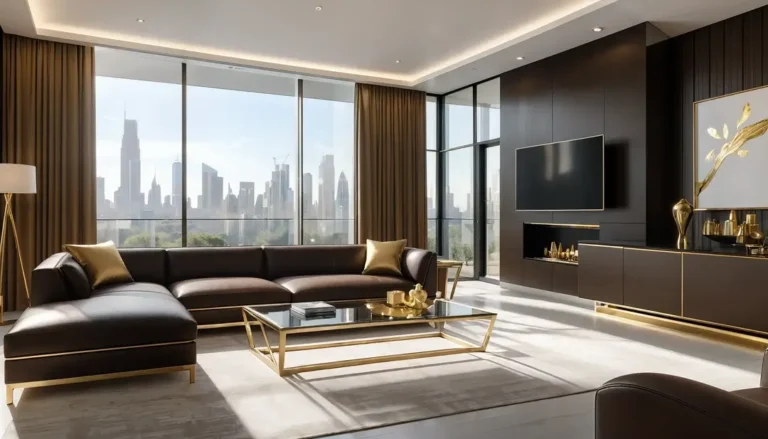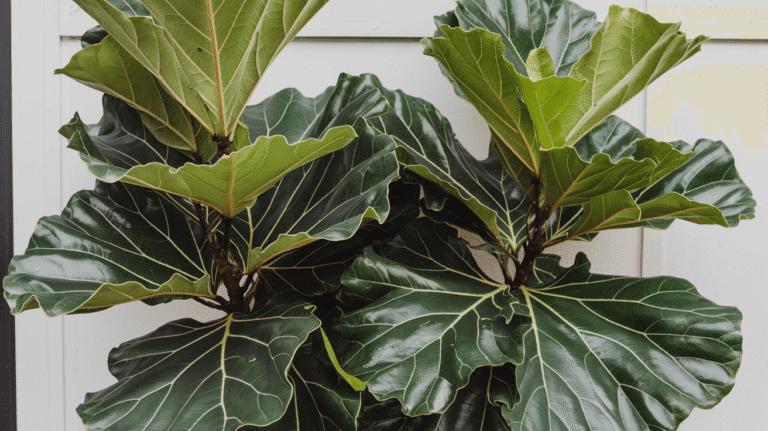In my experience helping homeowners create functional living spaces, I’ve observed that grey and brown color combinations offer something particularly valuable: the ability to create sophisticated yet livable environments.
Through various living room projects, I’ve learned that successful implementation depends on understanding how these colors work together while considering practical factors like lighting and maintenance.
Note: For any structural modifications, electrical work, or installations mentioned in this article, always consult with licensed professionals to ensure safety and code compliance.
This combination typically appeals to homeowners because the colors complement each other naturally—grey provides a calm, neutral foundation while brown adds organic warmth that prevents spaces from feeling cold or sterile. I’ve found this pairing works well in everything from small apartments to larger family homes.
Here are 25 grey and brown living room concepts that often work well in different home settings, based on observations from various projects.
1. Modern Minimalist Foundation
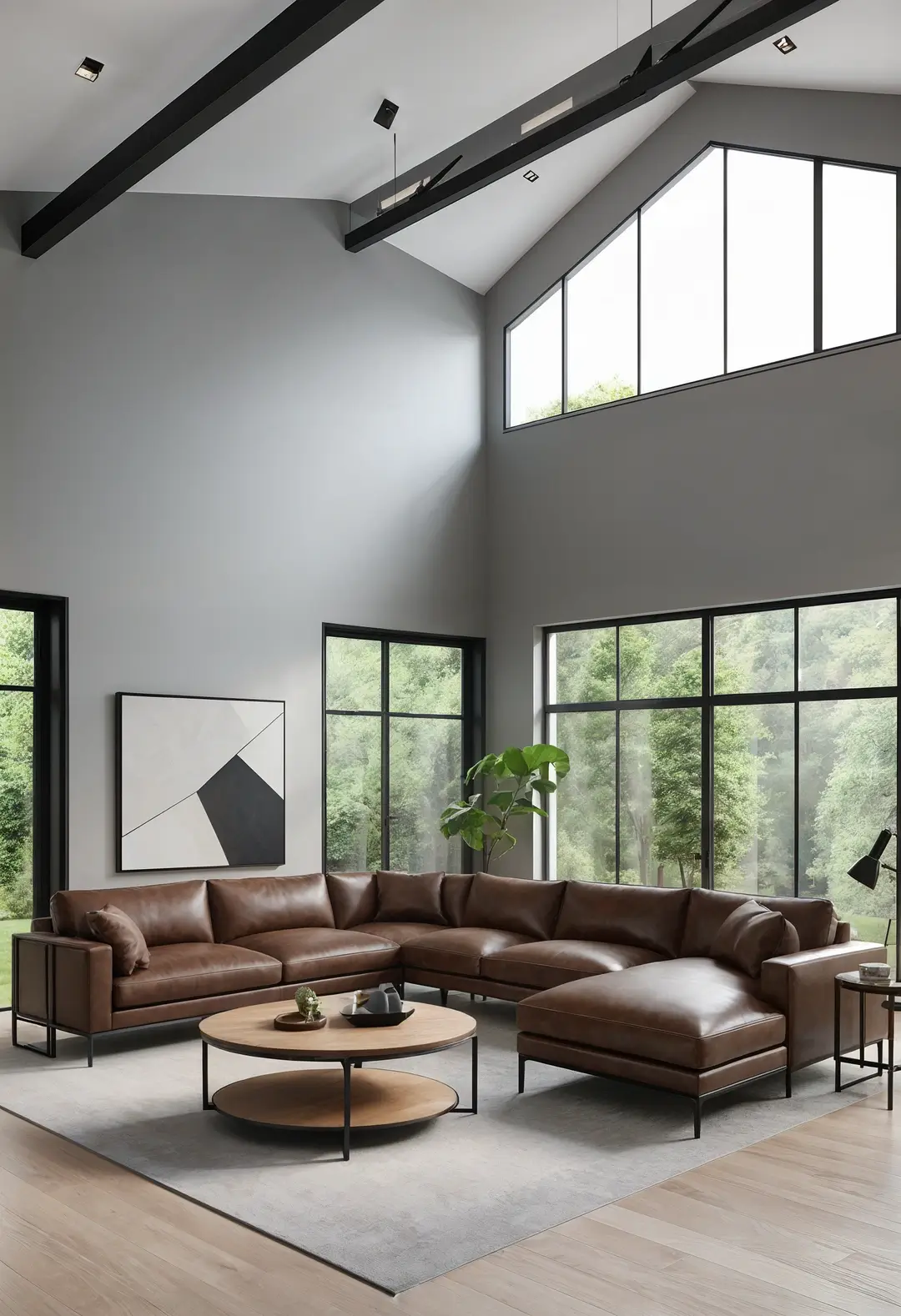
This approach often appeals to homeowners seeking clean, uncluttered spaces. I’ve found that soft, cool grey walls paired with a rich, dark brown leather sofa typically create an effective balance.
What I’ve observed: The key is restraint. Too many accessories may overwhelm the intended effect.
Practical tip: Adding one contrasting texture, like a raw wood side table, often prevents the space from feeling too clinical.
2. Industrial Edge with Heart
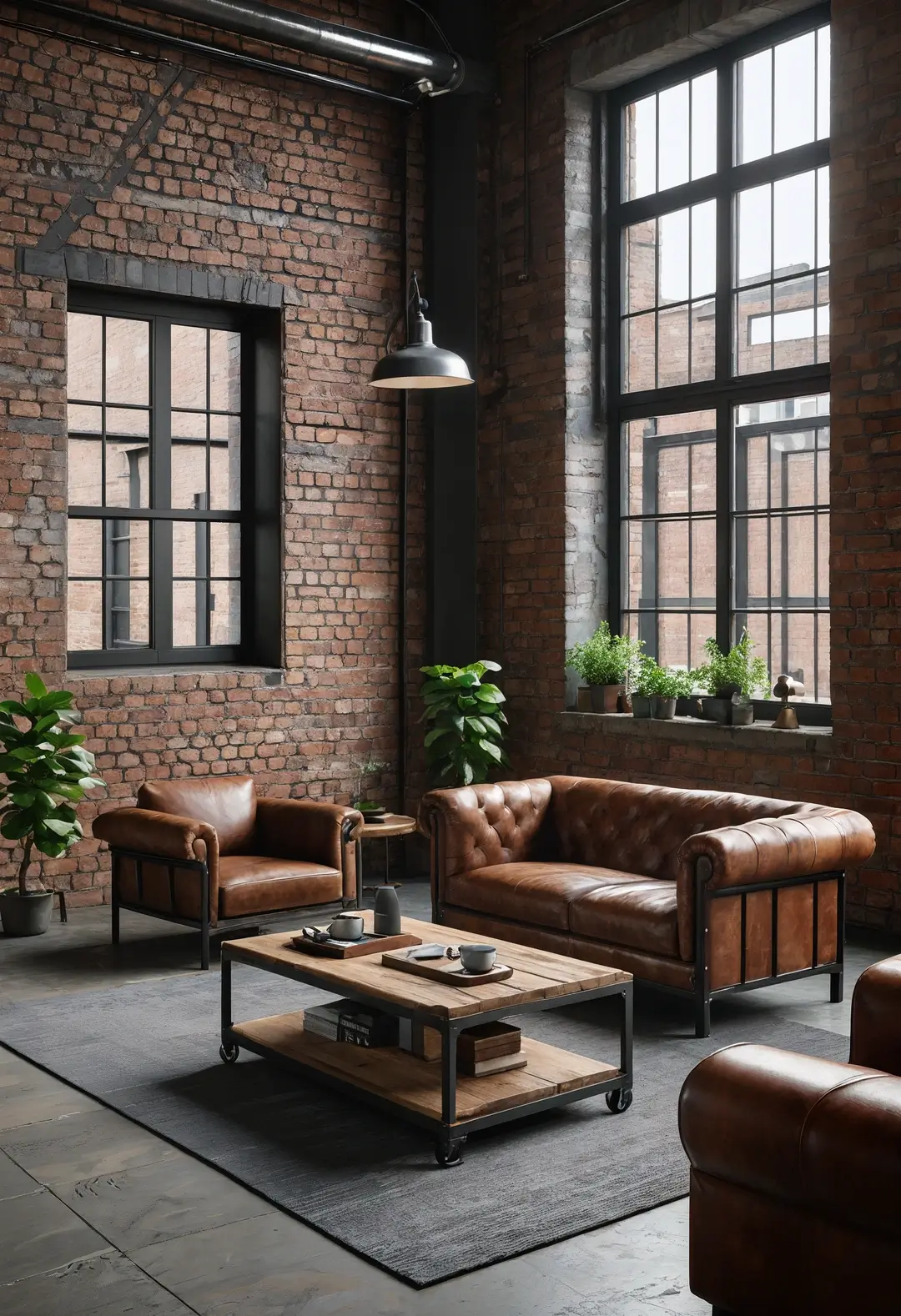
This style works well in converted spaces or homes with existing architectural elements. Grey exposed brick or painted brick typically creates an effective backdrop, while reclaimed brown wood furniture adds necessary warmth.
From various installations: Concrete grey floors may feel harsh, so softening them with a large jute rug in warm brown tones often helps balance the space.
Common consideration: Heavy metal accessories can overwhelm the design. Balance is typically important in industrial-style rooms.
3. Bohemian Luxury Layers
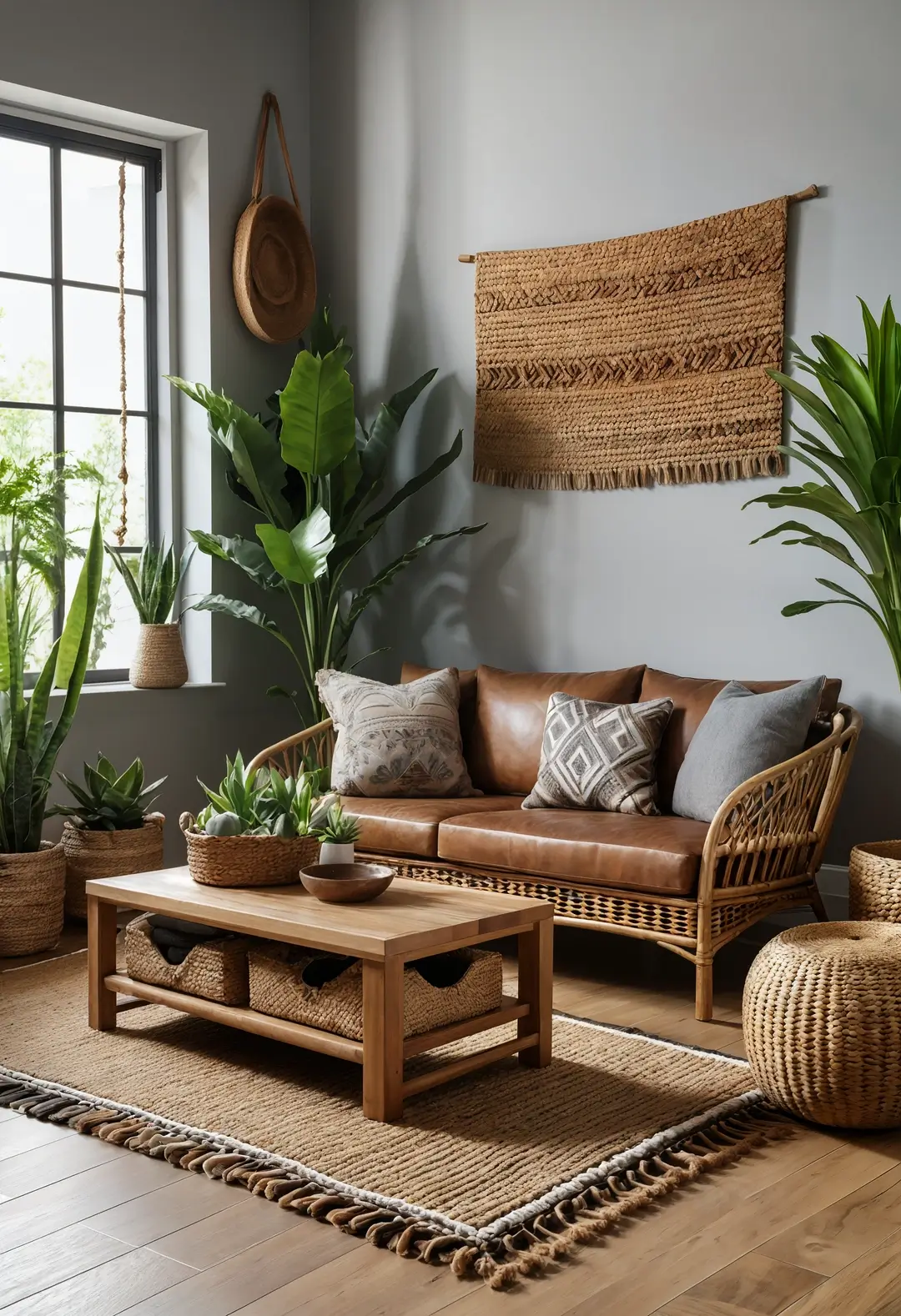
This style typically works well when grey serves as a calming base while layered brown textures—woven baskets, leather poufs, wooden coffee tables—create visual depth.
Design consideration: Mixing different brown tones often prevents the space from appearing too coordinated.
Practical note: Including handcrafted pieces may add authentic character that mass-produced items often lack.
4. Cottage Charm That’s Not Twee
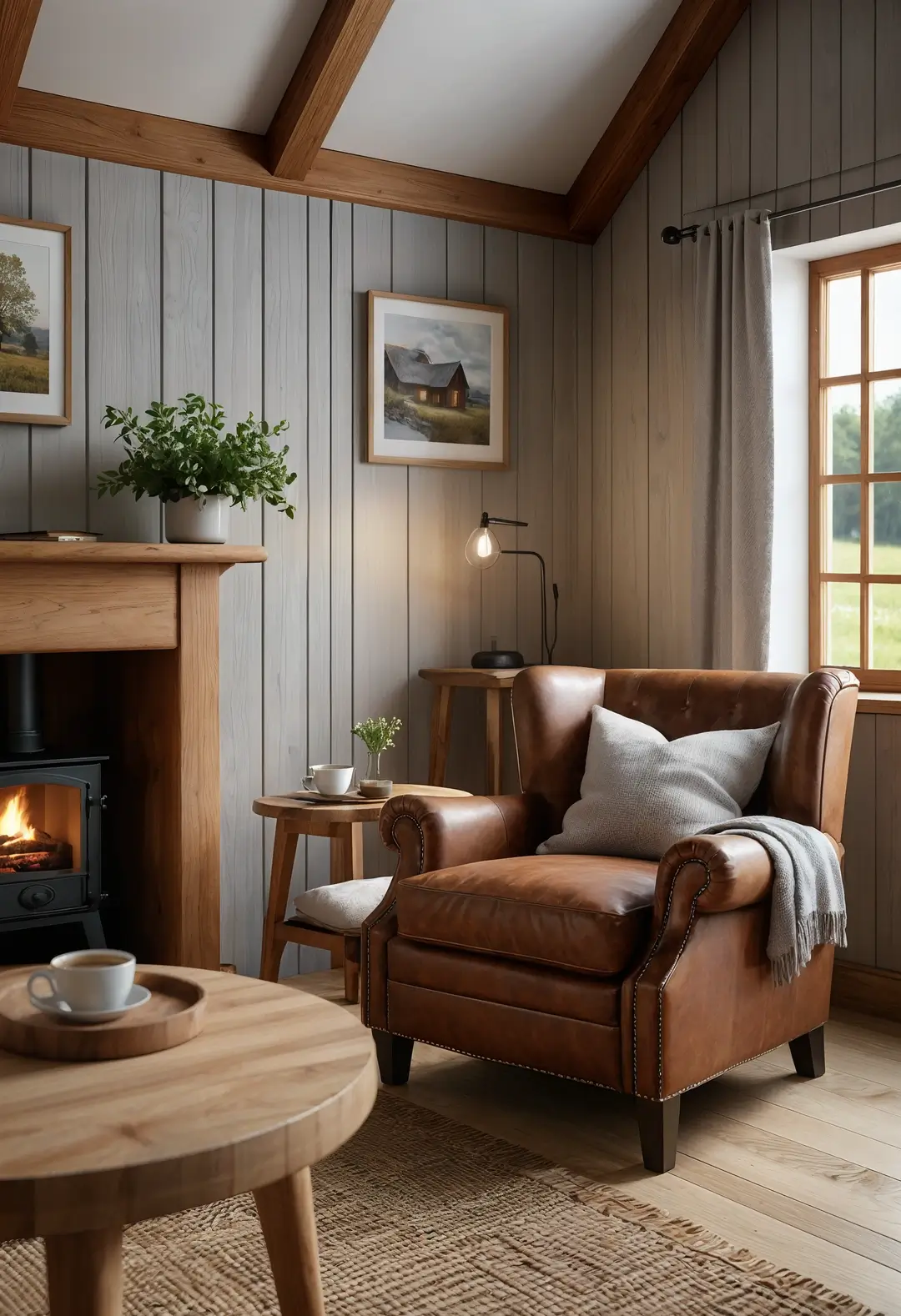
This approach often appeals to homeowners who appreciate cottage style but want to avoid overly cute aesthetics. Soft grey walls with brown wooden beams typically create warmth while maintaining sophistication.
Design consideration: Natural linen fabrics in window treatments often make the difference between authentic cottage style and overly themed decor.
Why this works: Grey typically keeps traditional elements feeling fresh and contemporary.
5. Coastal Without the Clichés
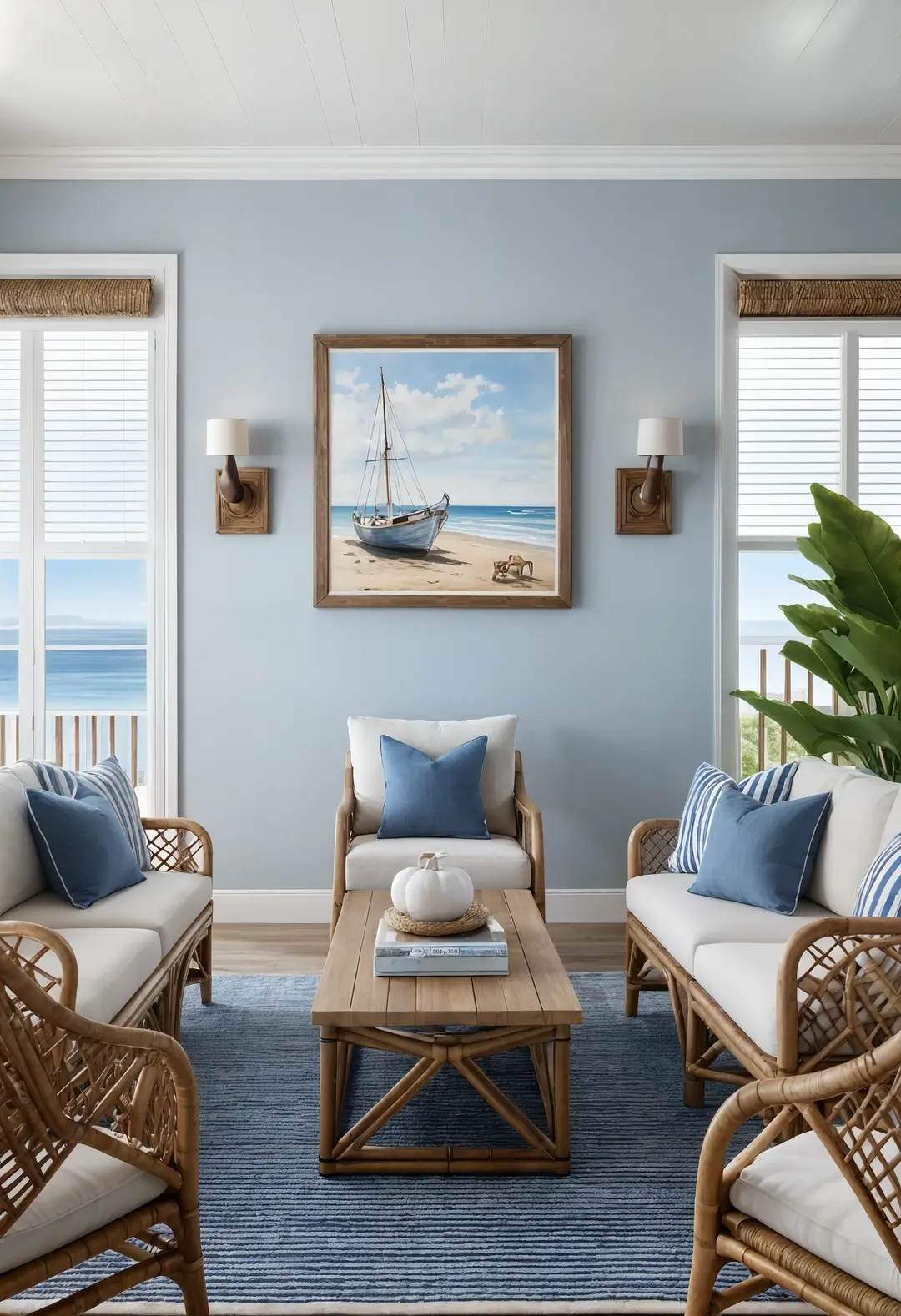
Authentic coastal style typically focuses on natural weathering rather than obvious nautical themes. Weathered grey walls with sun-bleached brown furniture often capture genuine beach house character.
Design approach: Driftwood-inspired coffee tables typically work better than obviously nautical accessories.
Key insight: The most successful coastal rooms often feel naturally lived-in rather than deliberately decorated.
6. Transitional Sophistication
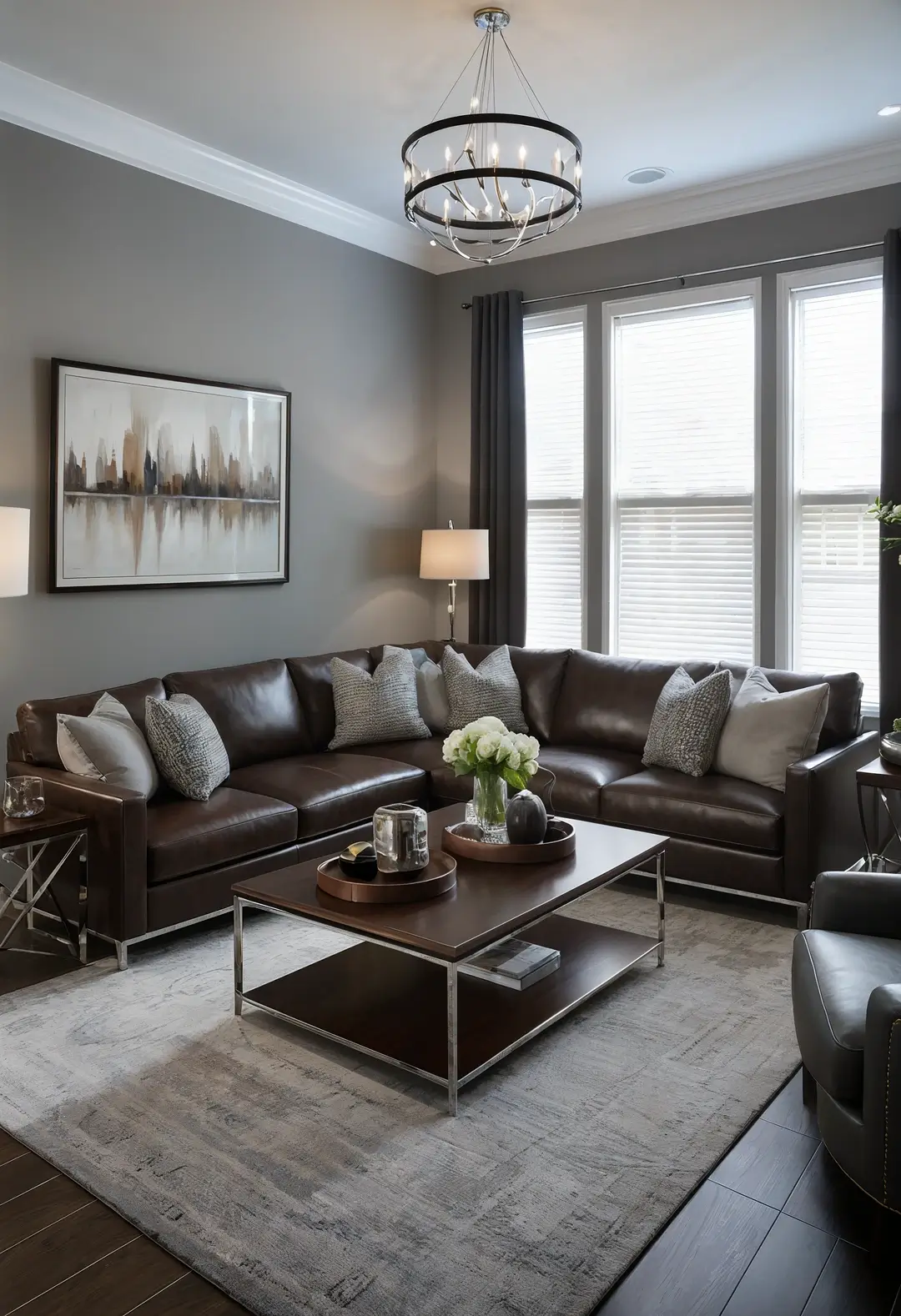
This approach often appeals to homeowners who appreciate both traditional and contemporary elements. Grey walls typically provide neutrality while deep brown leather furniture adds classic elegance.
Design consideration: Chrome fixtures may feel too cool with this palette; brushed gold or warm brass often works better.
Practical tip: Proportions typically matter more than specific pieces. Choosing one substantial brown furniture piece as an anchor often works well.
7. Rustic Authenticity
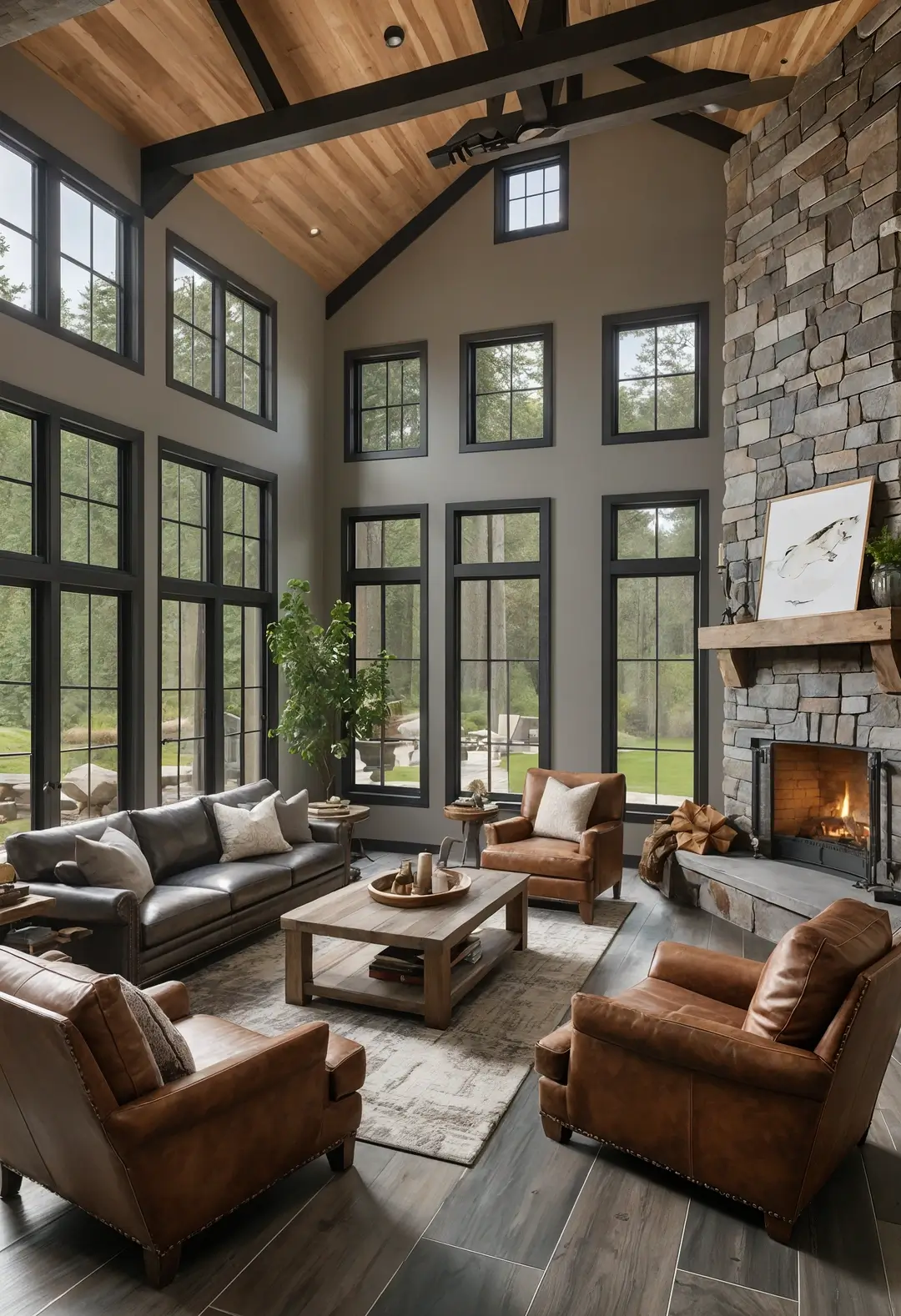
This rustic approach typically works well with authentic materials. Grey-washed wood floors paired with reclaimed brown furniture often create honest rustic character.
Design consideration: Genuine patina and weathering often provide better visual appeal than artificially distressed pieces.
Why this appeals to many homeowners: This style often ages beautifully, with natural imperfections becoming character features over time.
8. Contemporary Classics
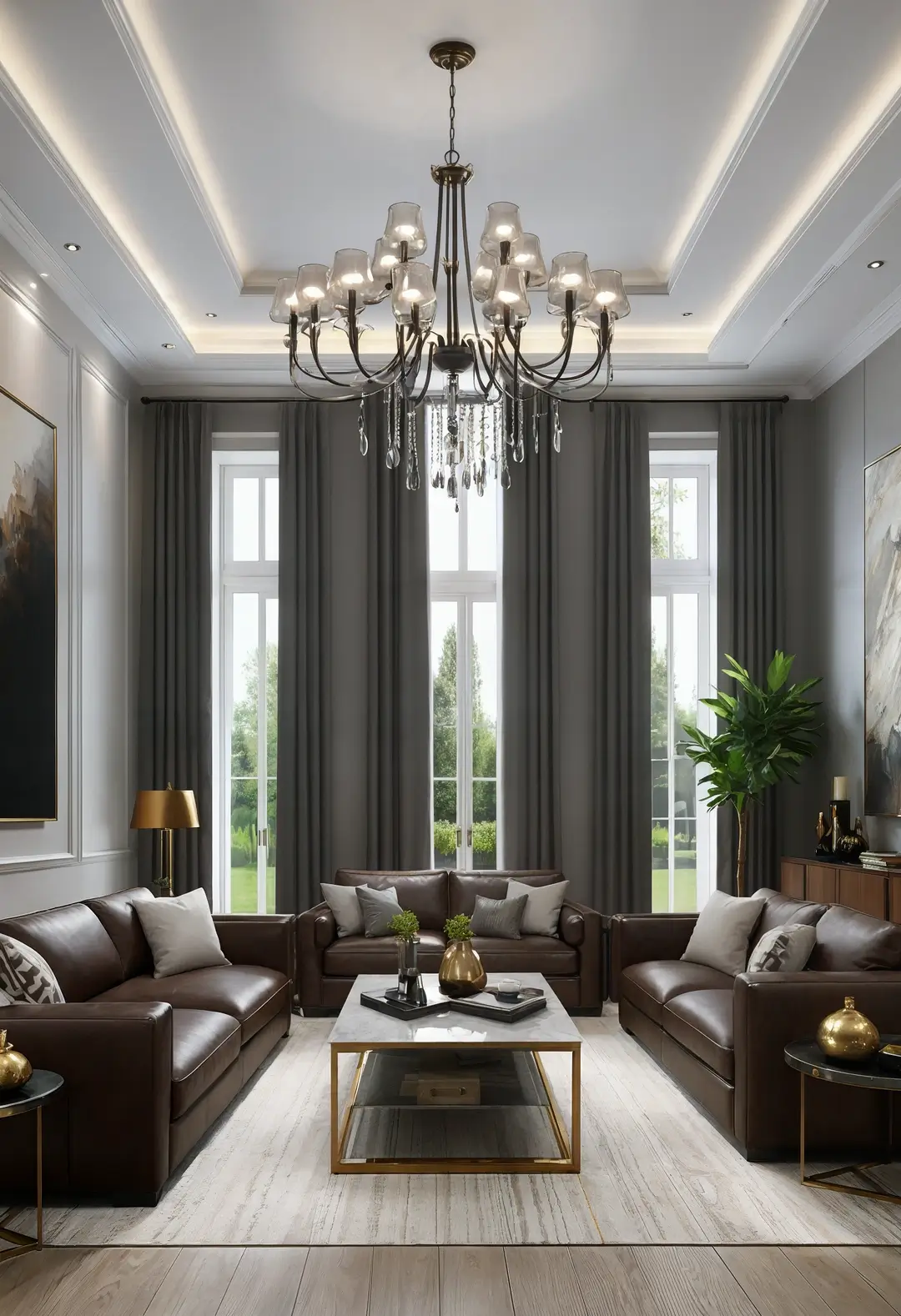
This approach often appeals to homeowners seeking timeless design. Soft grey walls with deep brown furniture pieces typically create a foundation that remains stylish over time.
Design formula: One large brown leather piece combined with grey textiles often creates instant sophistication.
Enhancement tip: A statement mirror in a brown or brass frame may help make the space feel more elevated.
9. Art Deco Drama
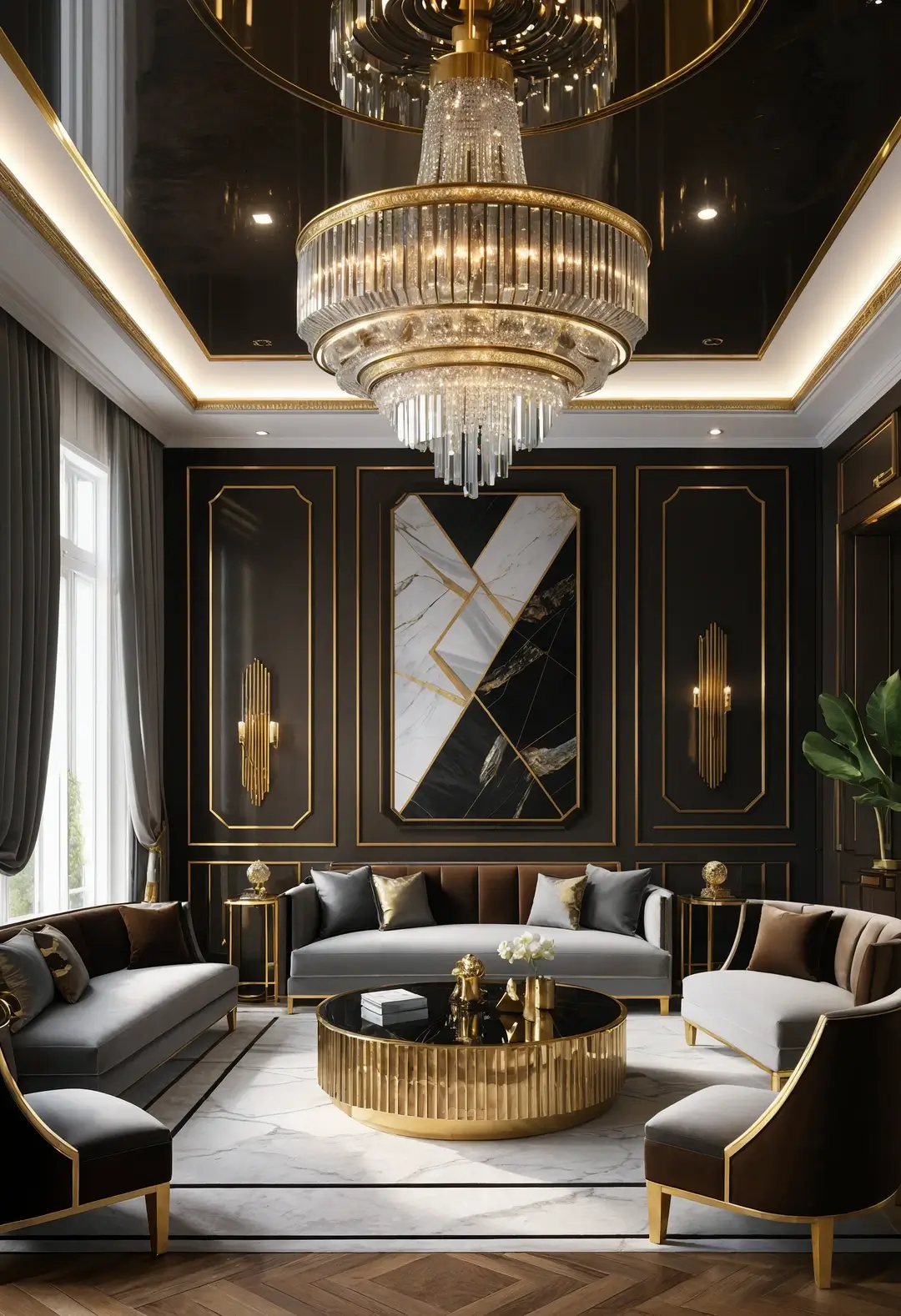
This style works well for homeowners who appreciate vintage aesthetics. Deep brown velvet against soft grey walls typically creates an effective Art Deco backdrop.
Design consideration: Geometric patterns in rugs often tie the elements together without overwhelming the space.
Finishing detail: Crystal light fixtures may add the glamorous touch this style often requires.
10. Scandinavian Simplicity
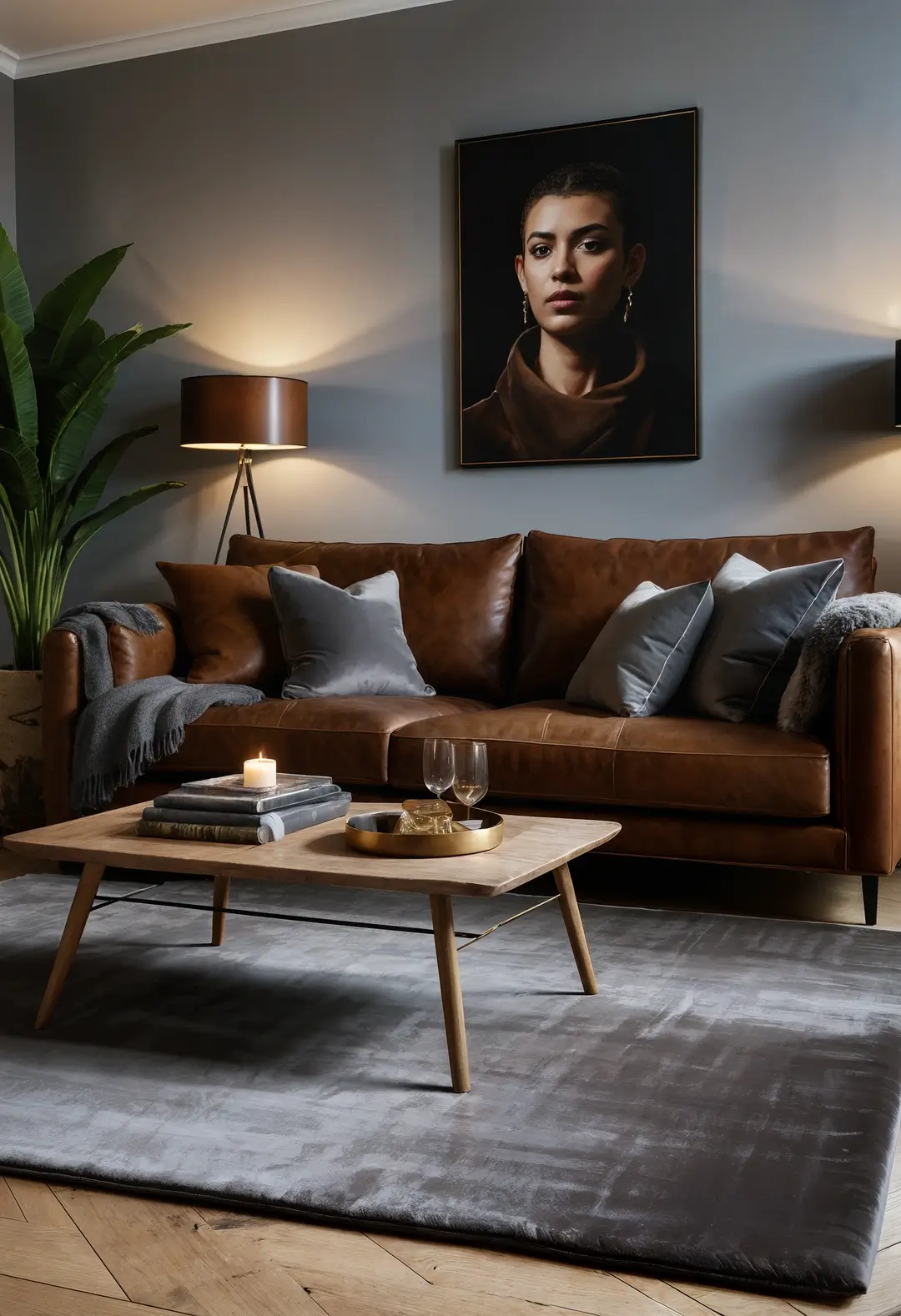
This minimalist Scandinavian approach often appeals to homeowners seeking clean, uncluttered spaces. Light grey walls typically showcase simple brown wooden furniture effectively.
What makes this effective: The natural wood grain often becomes the primary decorative element.
Design preference: Pieces with visible wood grain rather than smooth, uniform finishes often work better for this style.
11. Texture-Rich Comfort
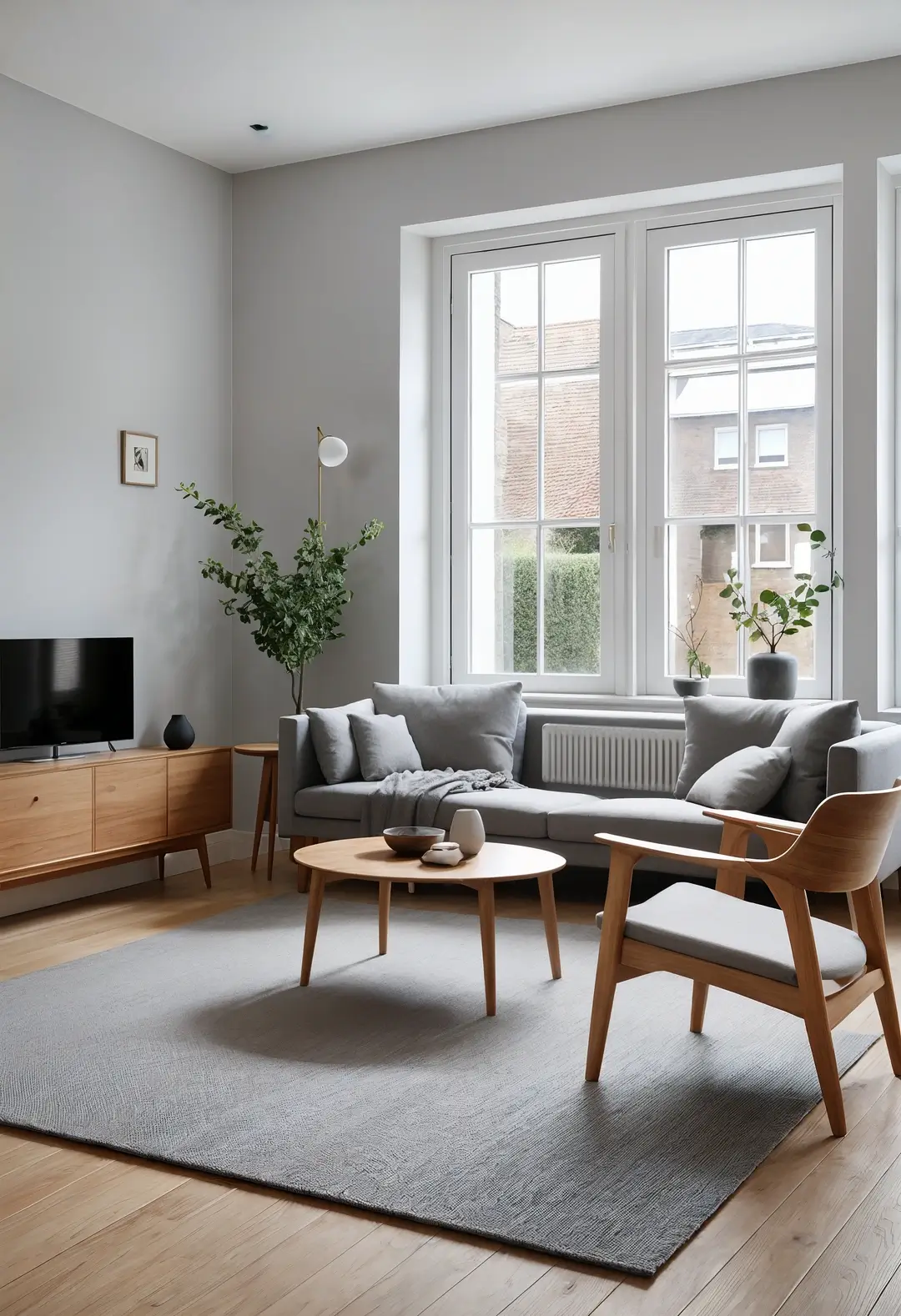
Texture plays an important role in creating inviting spaces, especially with neutral color palettes. Mixing grey velvet, brown leather, and wool throws typically creates visual depth.
Design observation: Different textures naturally invite touch, making rooms feel more engaging and comfortable.
Practical approach: Including multiple textures within the grey-brown palette often adds visual interest without introducing competing colors.
12. Mid-Century Revival
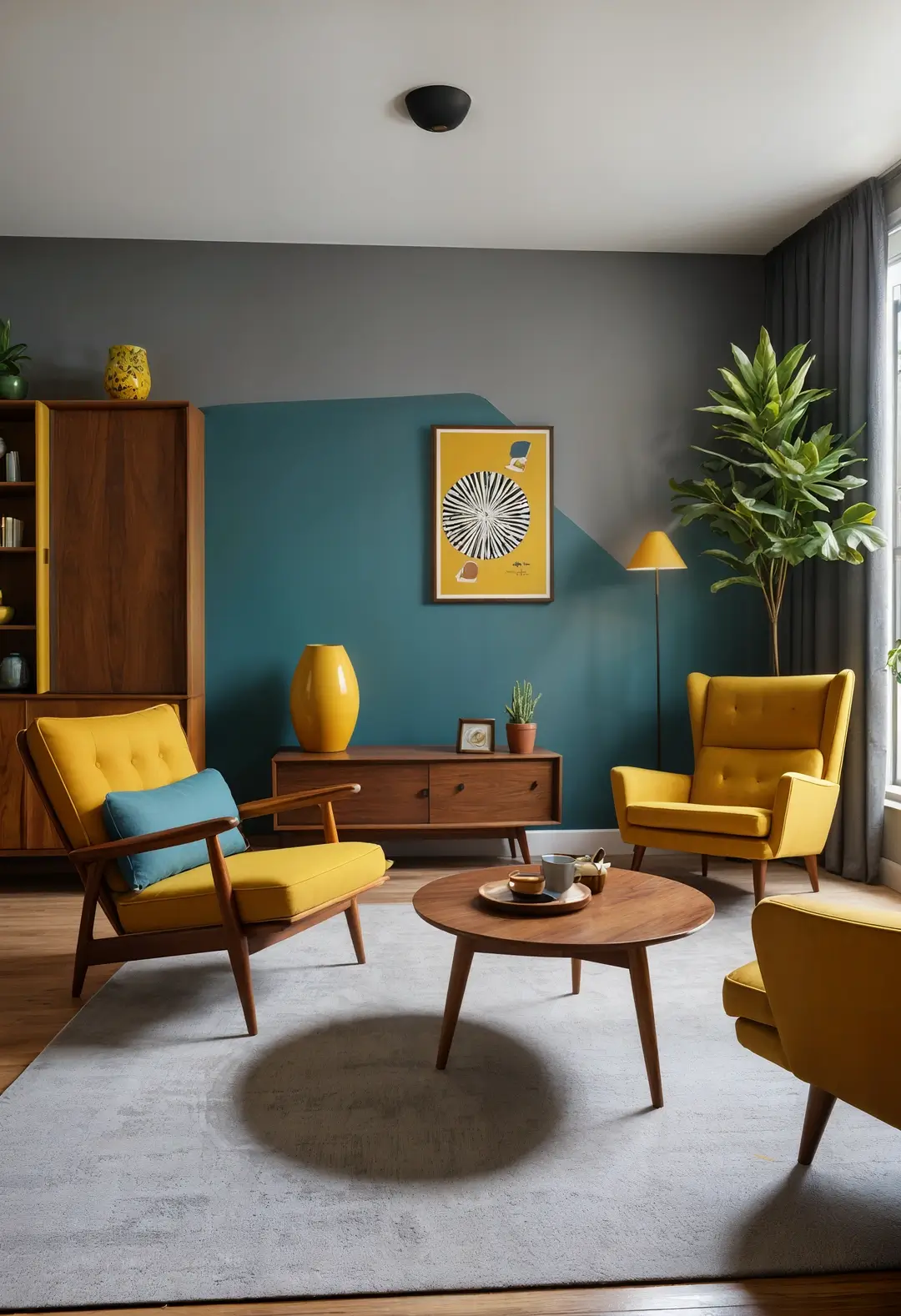
This style often works particularly well in ranch homes from the mid-century era. Grey accent walls typically highlight authentic mid-century brown wood furniture effectively.
Design consideration: Original walnut pieces from this period often represent good long-term investments as they tend to appreciate in value.
Color enhancement: Adding mustard yellow or burnt orange accessories often captures the authentic mid-century aesthetic.
13. Luxurious Layering
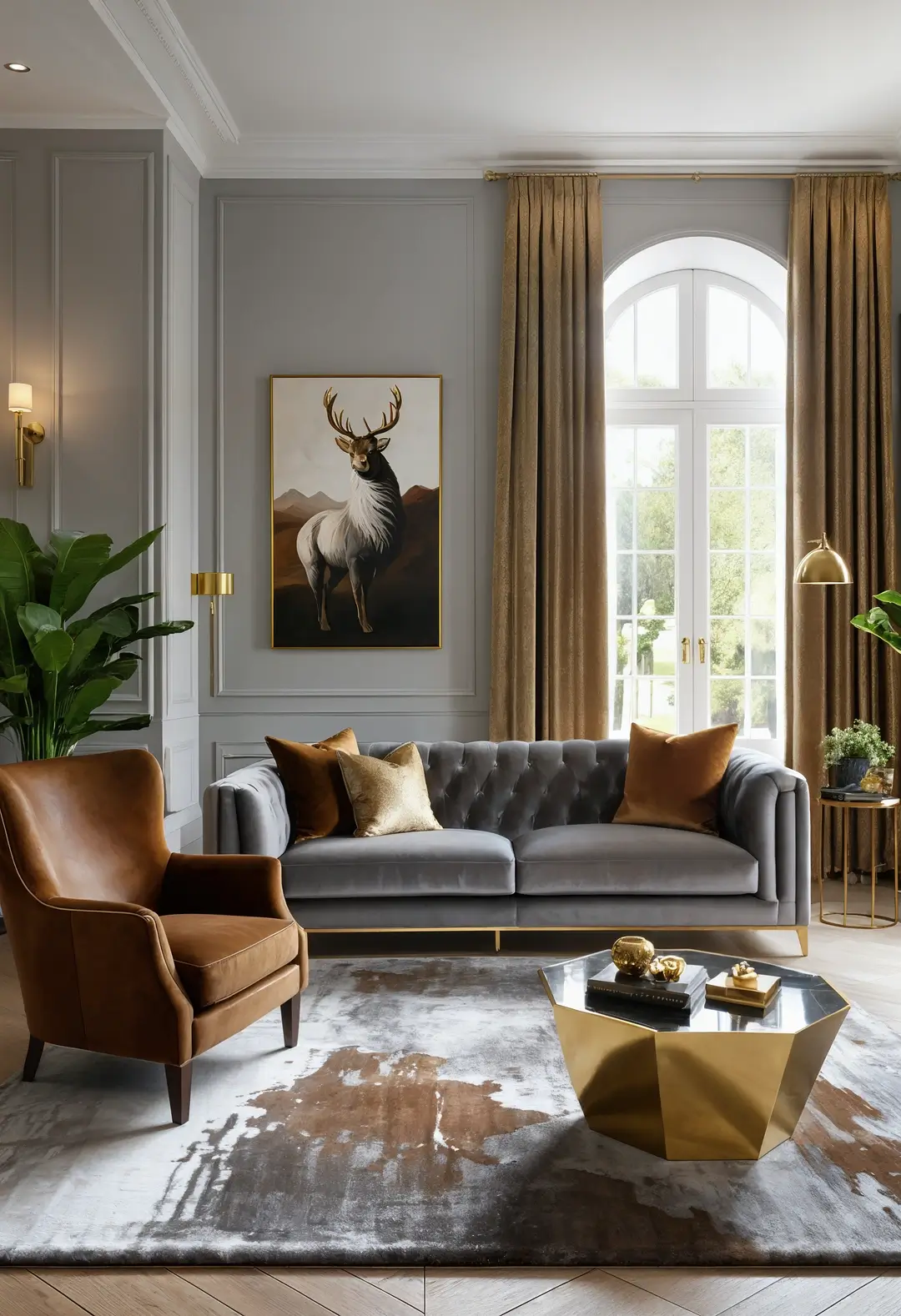
This approach demonstrates how luxury often comes from quality materials rather than expensive brands. Grey velvet sofas with brown leather chairs typically create instant sophistication.
Design principle: A single high-quality piece often elevates an entire room more than multiple mediocre items.
Investment consideration: Exceptional brown leather furniture often becomes a long-lasting focal point that improves with age.
14. Vintage Character
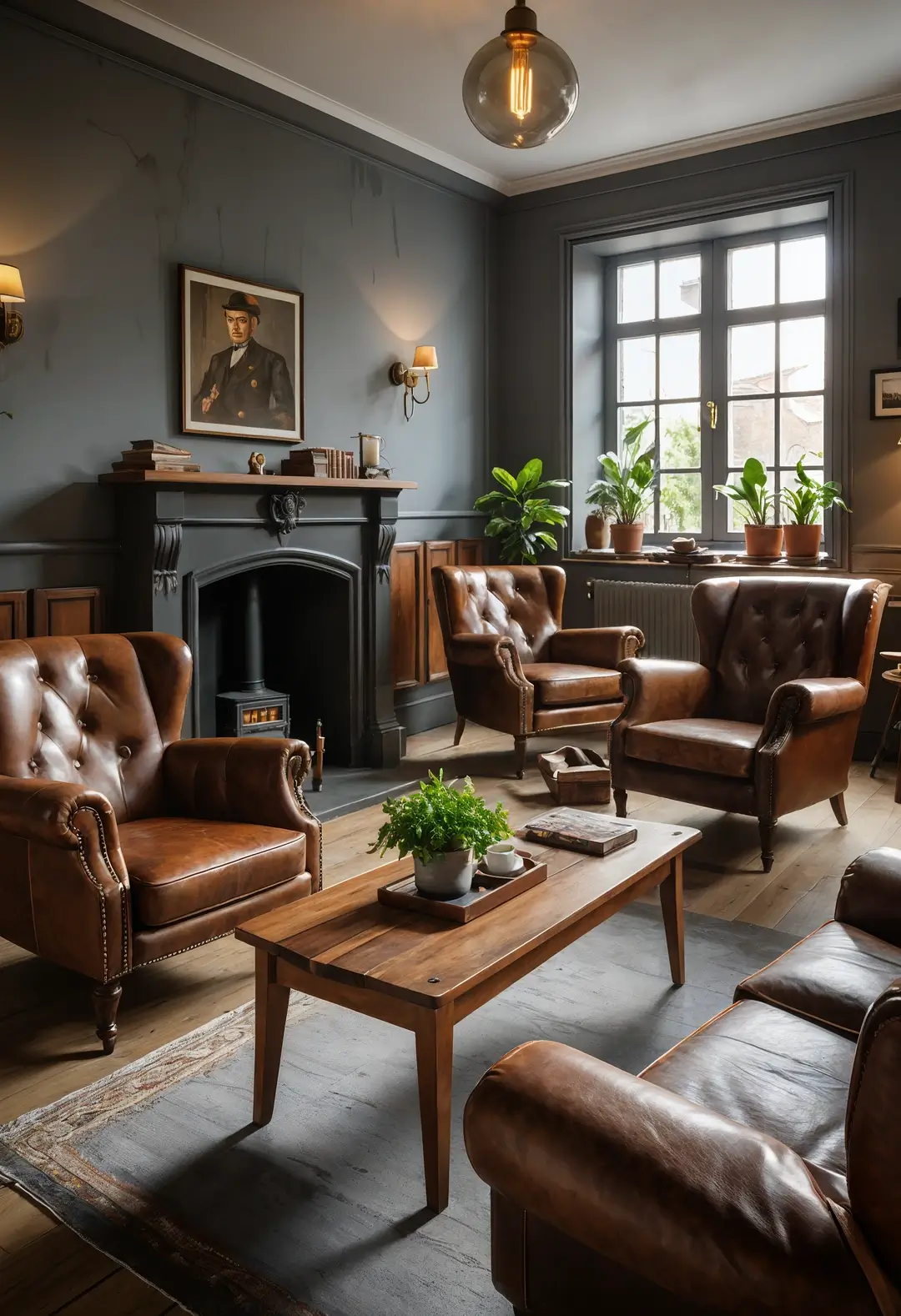
This approach often works well for showcasing vintage furniture pieces. Grey backgrounds typically allow vintage brown pieces to stand out without overwhelming the space.
Design observation: Distressed brown leather often looks better with age, unlike many modern materials that show wear less gracefully.
Why this works: Grey walls often prevent vintage pieces from overpowering smaller rooms.
15. Eclectic Curation
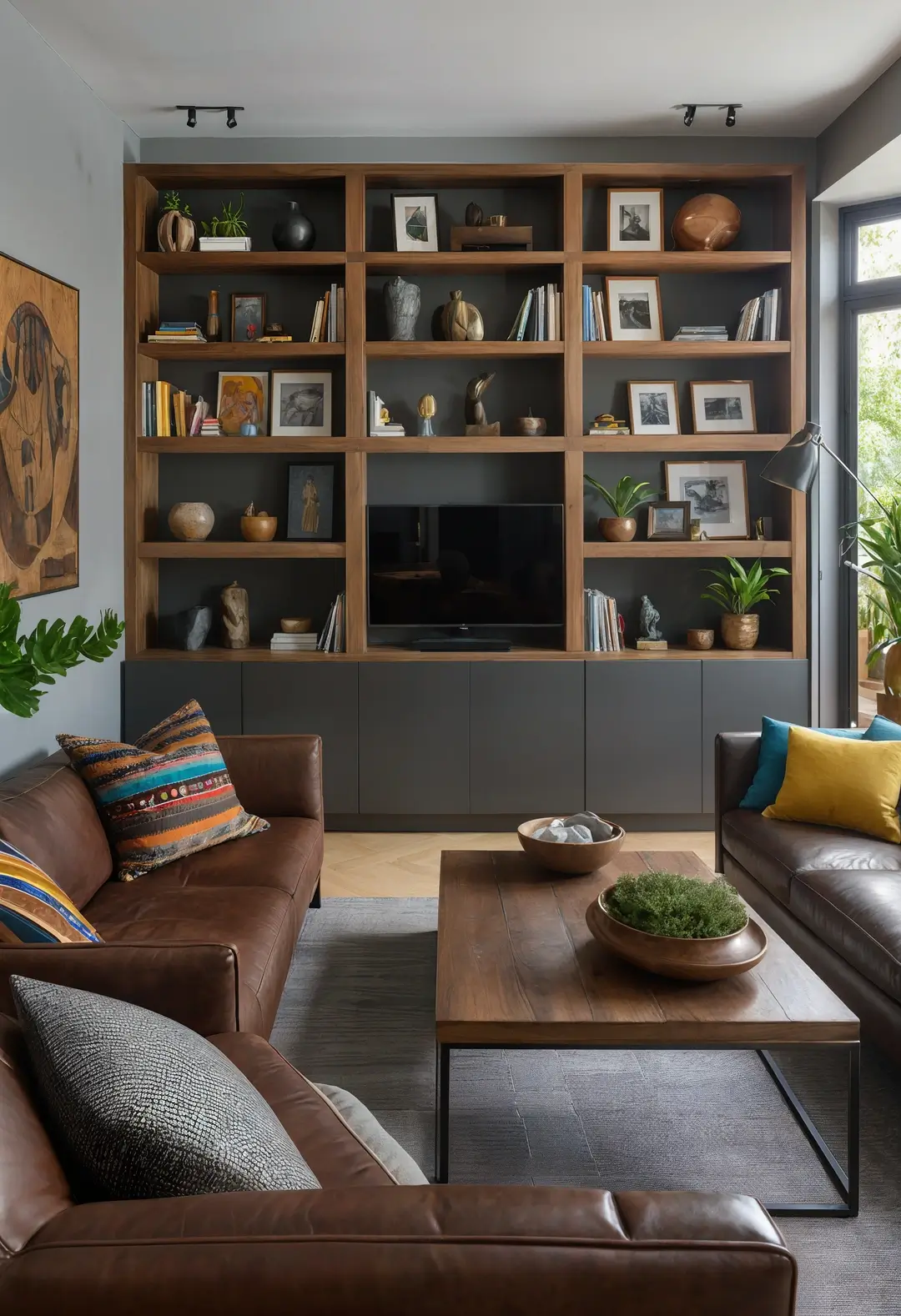
This approach often appeals to homeowners who enjoy varied styles and textures. Using grey and brown as the base typically allows for personality through diverse patterns and materials.
Design observation: The most interesting rooms often appear to have been collected over time rather than purchased all at once.
Practical approach: Choosing one “statement” brown piece as a focal point, then building around it gradually, often works well.
16. Zen Tranquility
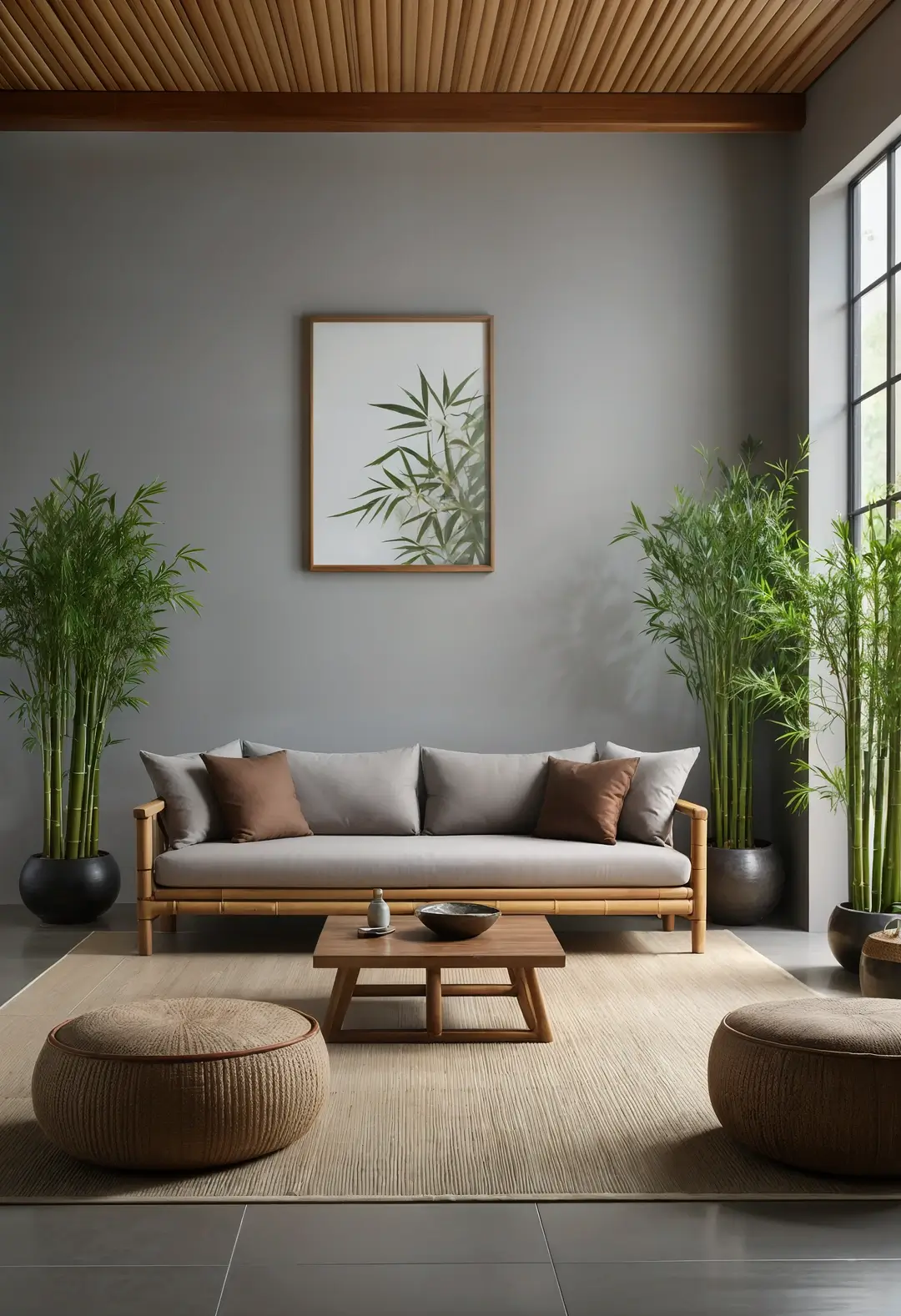
This calming approach often appeals to homeowners seeking peaceful environments. Soft grey walls with natural brown bamboo furniture typically create a serene atmosphere.
Practical benefit: These rooms may positively affect mood and promote relaxation.
Essential element: Living plants often serve both decorative and air-quality purposes in these spaces.
17. Glamorous Grey Walls
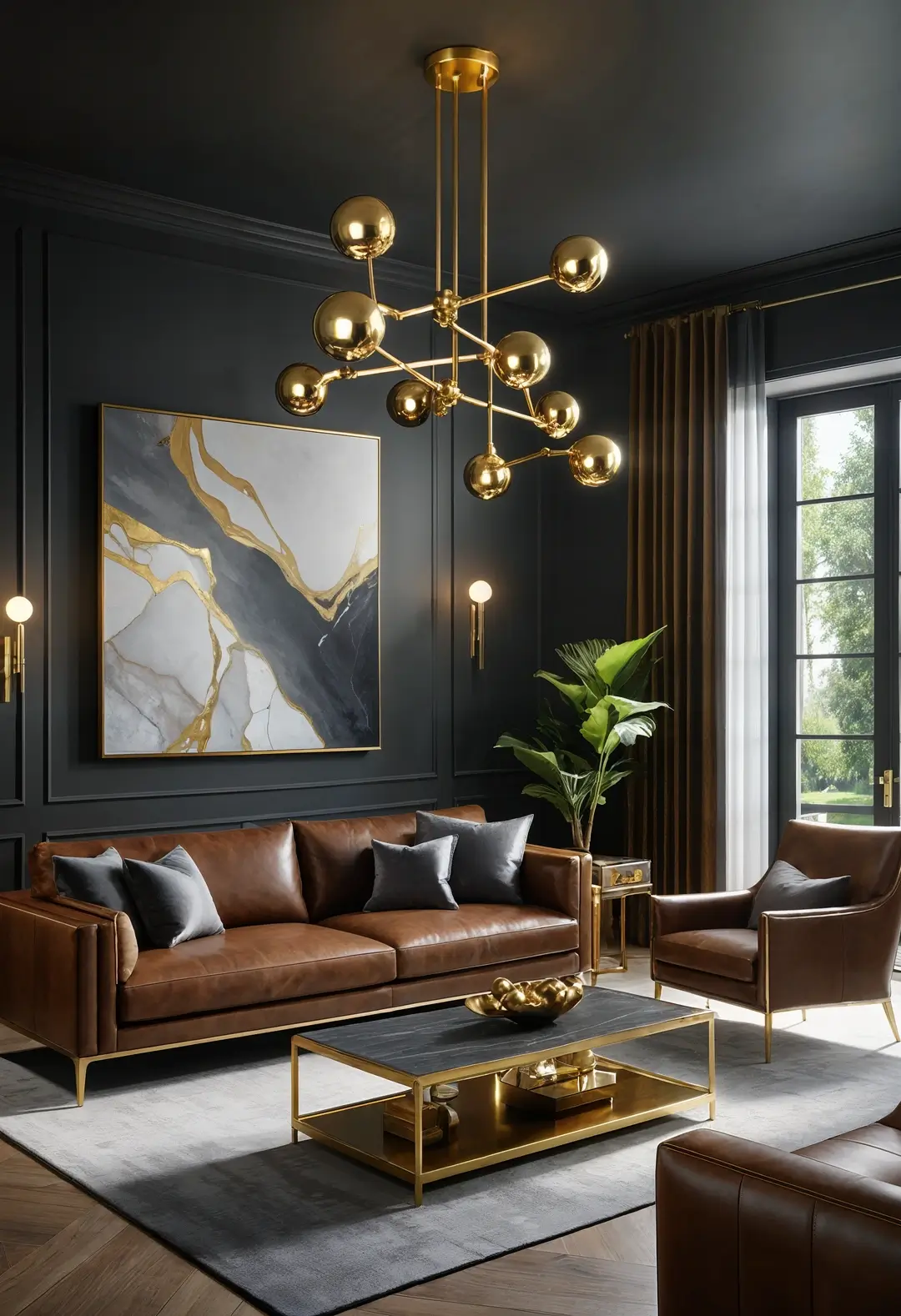
Charcoal grey walls may seem risky, but this approach often works well when balanced properly. Brown leather furniture typically prevents dark walls from feeling oppressive.
Design benefit: Dark walls often make rooms feel more intimate and sophisticated.
Lighting consideration: Brass fixtures typically help warm up potentially cool dark grey tones.
18. Cozy Comfort Zone
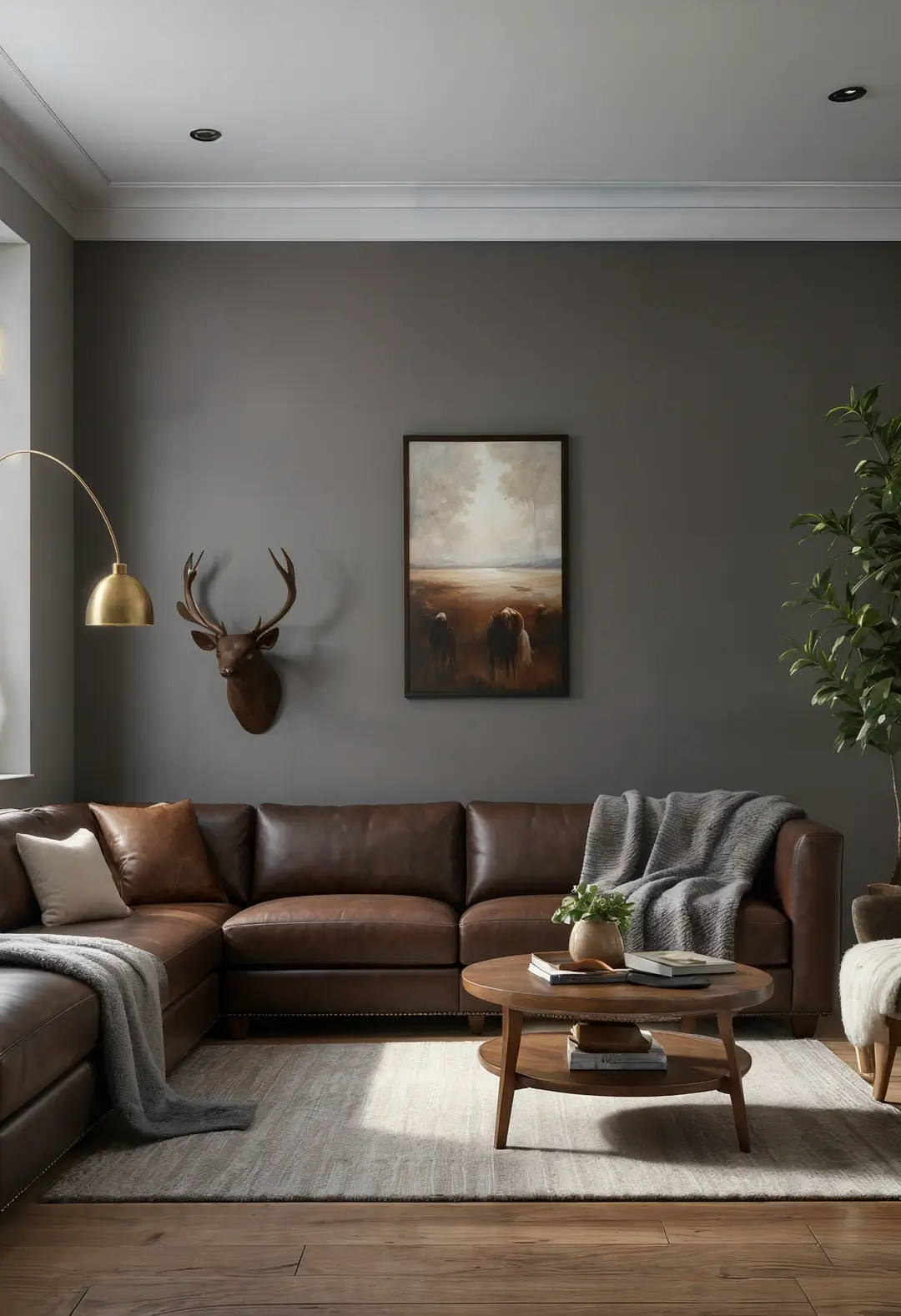
This approach often appeals to homeowners who prioritize comfort in their living spaces. Light grey walls with dark brown leather furniture typically create an inviting relaxation area.
What works well: Layered textiles in neutral tones often make seating areas more appealing and comfortable.
Design insight: The most frequently used living rooms often benefit from prioritizing comfort without sacrificing visual appeal.
19. Monochromatic Mastery
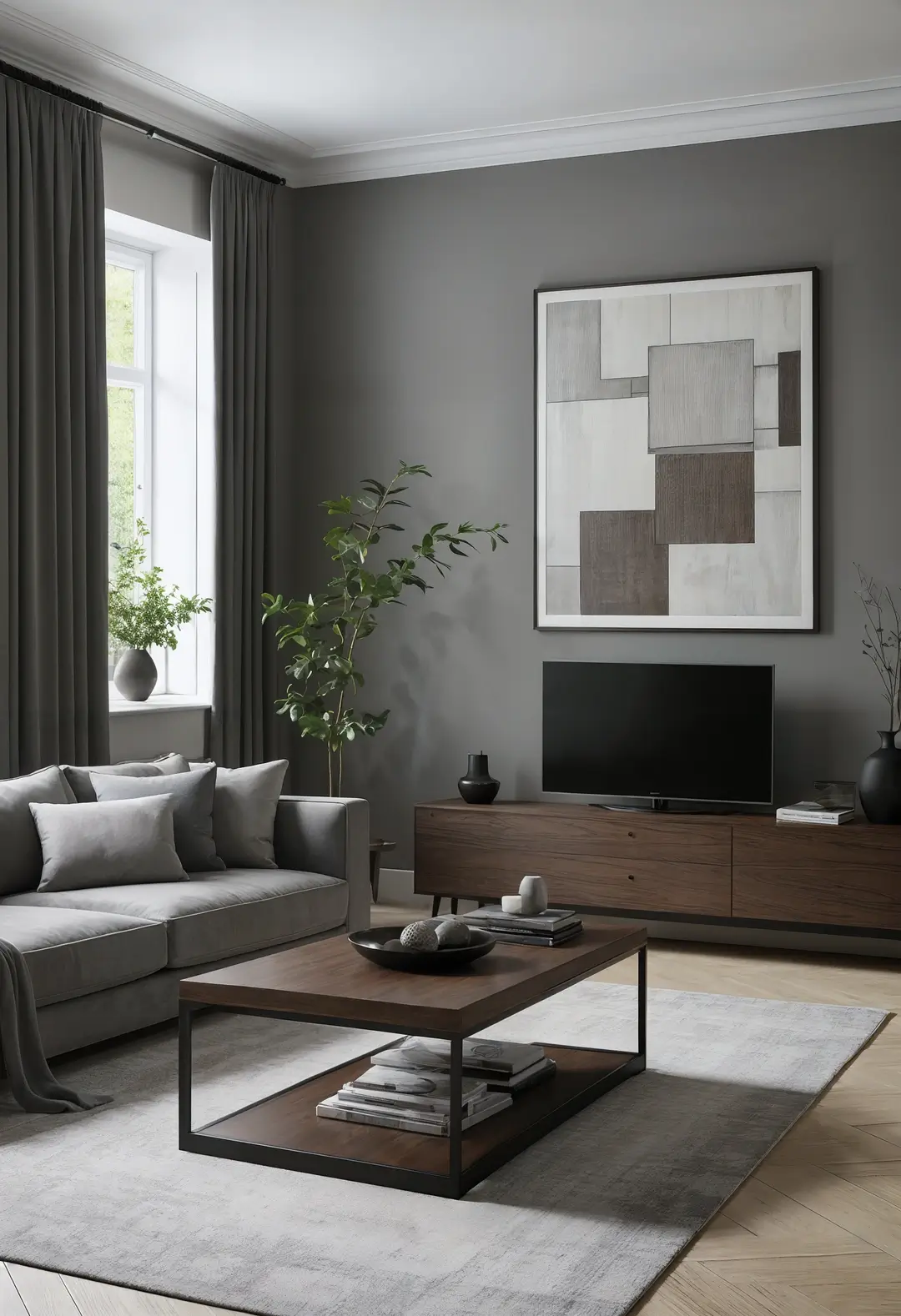
This sophisticated approach requires careful attention to color undertones. Various shades of grey and brown typically create depth without introducing competing colors.
Design skill: Matching undertones often prevents rooms from appearing muddy or disconnected.
Practical approach: Using multiple shades within the grey-brown spectrum often creates visual interest while maintaining harmony.
20. Modern Farmhouse
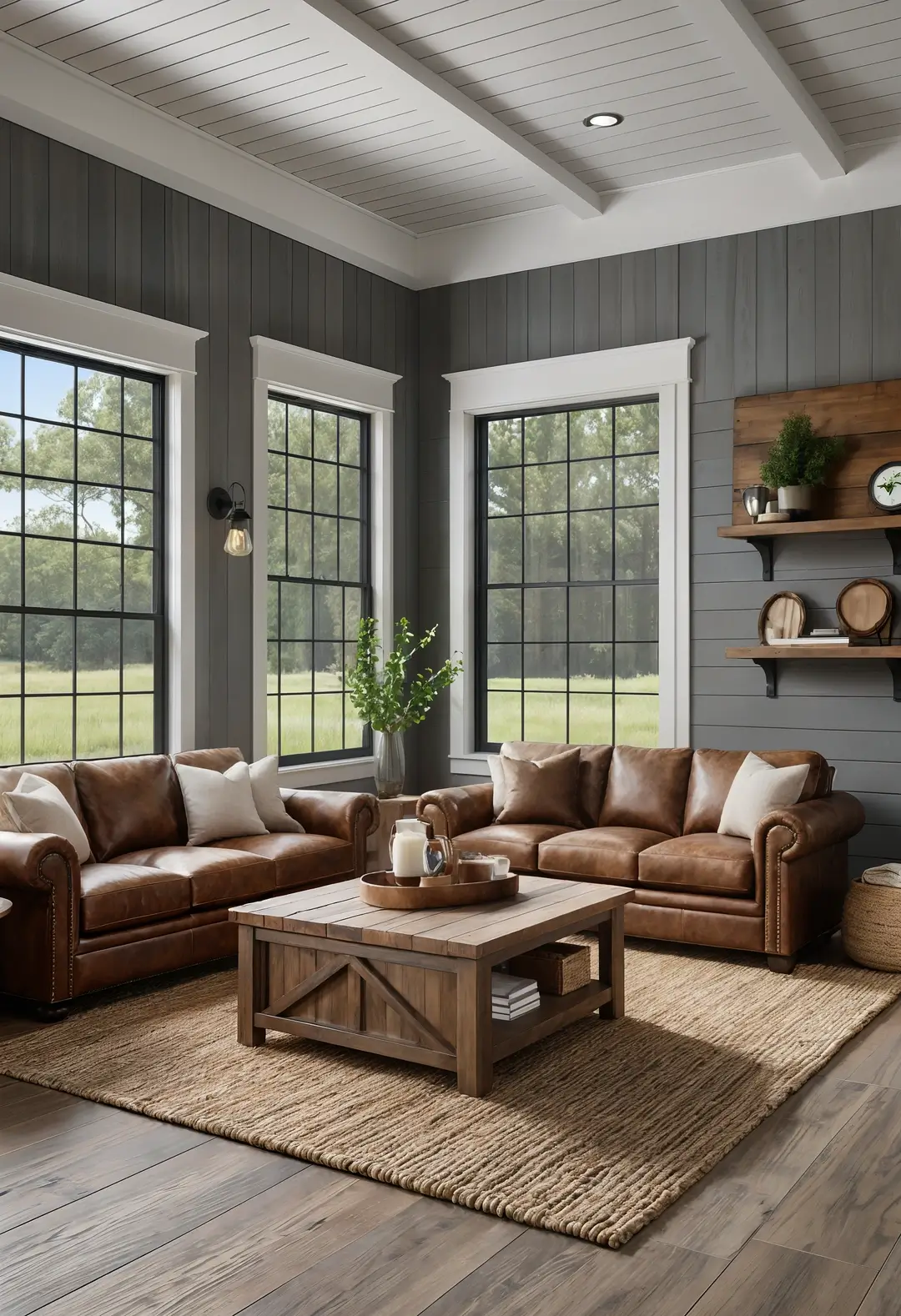
This popular style works well because it typically balances rustic charm with contemporary livability. Grey shiplap walls with weathered brown furniture often capture authentic farmhouse character.
Design principle: Authentic farmhouse style often comes from functional necessity rather than purely decorative choices.
Why this remains appealing: The combination often feels both nostalgic and current, appealing to various tastes.
21. Gothic Romance
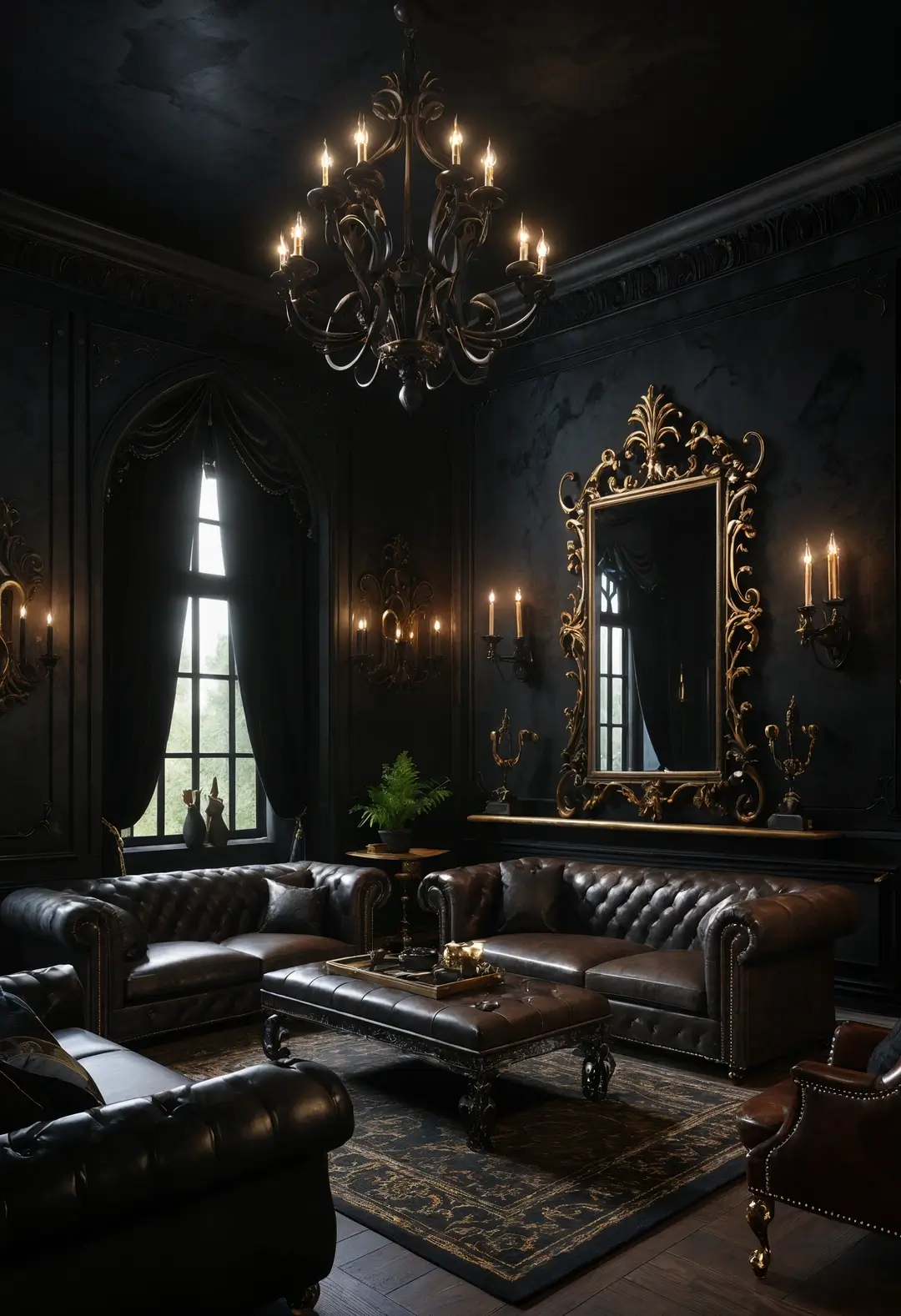
This dramatic approach often appeals to homeowners who enjoy bold, moody spaces. Dark grey walls with deep brown furniture typically create mysterious elegance.
Design consideration: This style often works best in rooms with ample natural light to prevent them from feeling too dark.
Key element: Rich fabrics like velvet often help transform potentially harsh color combinations into luxurious environments.
22. Urban Loft Living
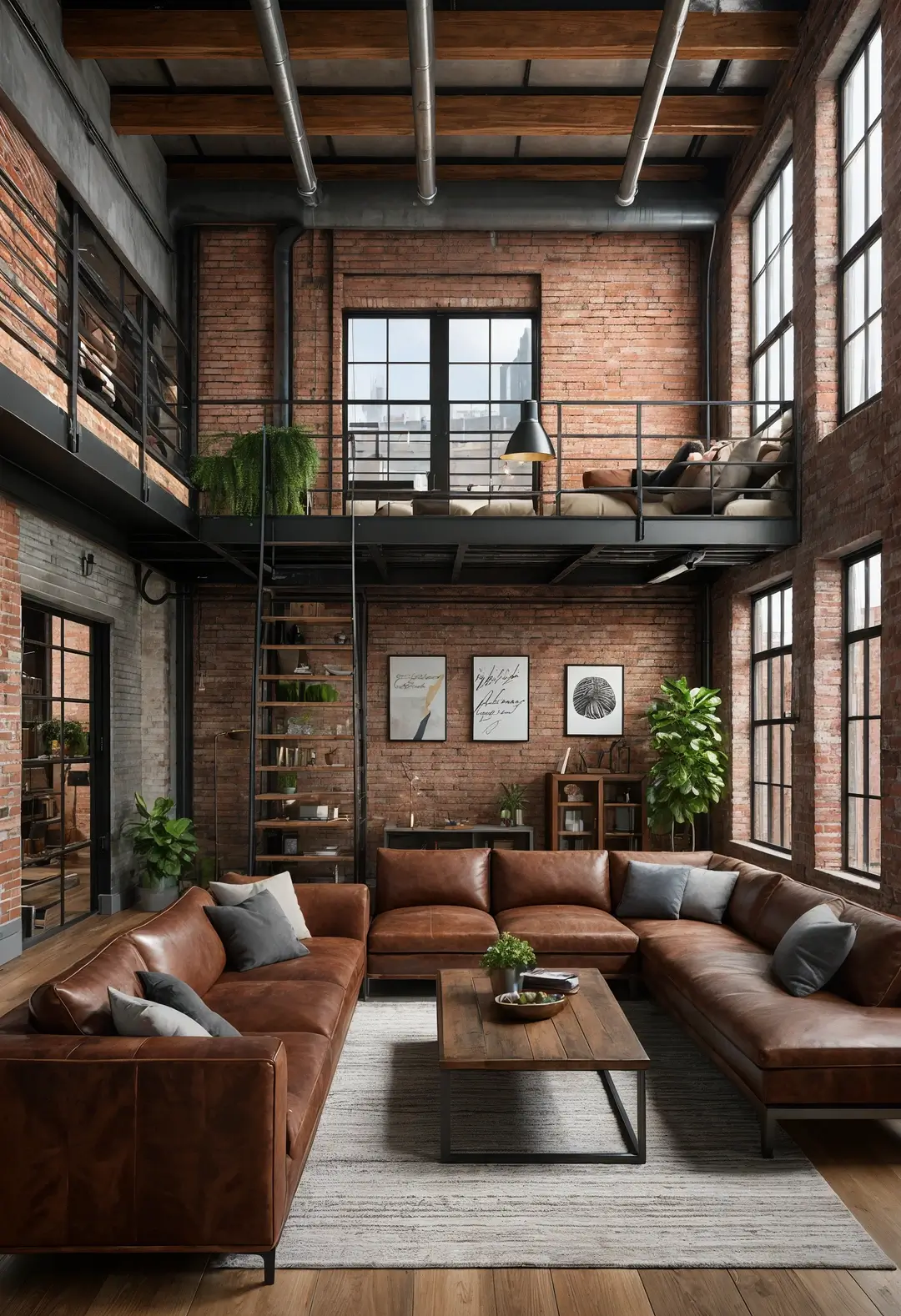
This industrial approach often works well in city apartments or converted spaces. Concrete grey elements with reclaimed brown wood furniture typically capture authentic loft character.
Design benefit: Raw materials often age well and require minimal maintenance over time.
Why this appeals to many homeowners: This style often celebrates a building’s original character rather than concealing it.
23. Natural Harmony
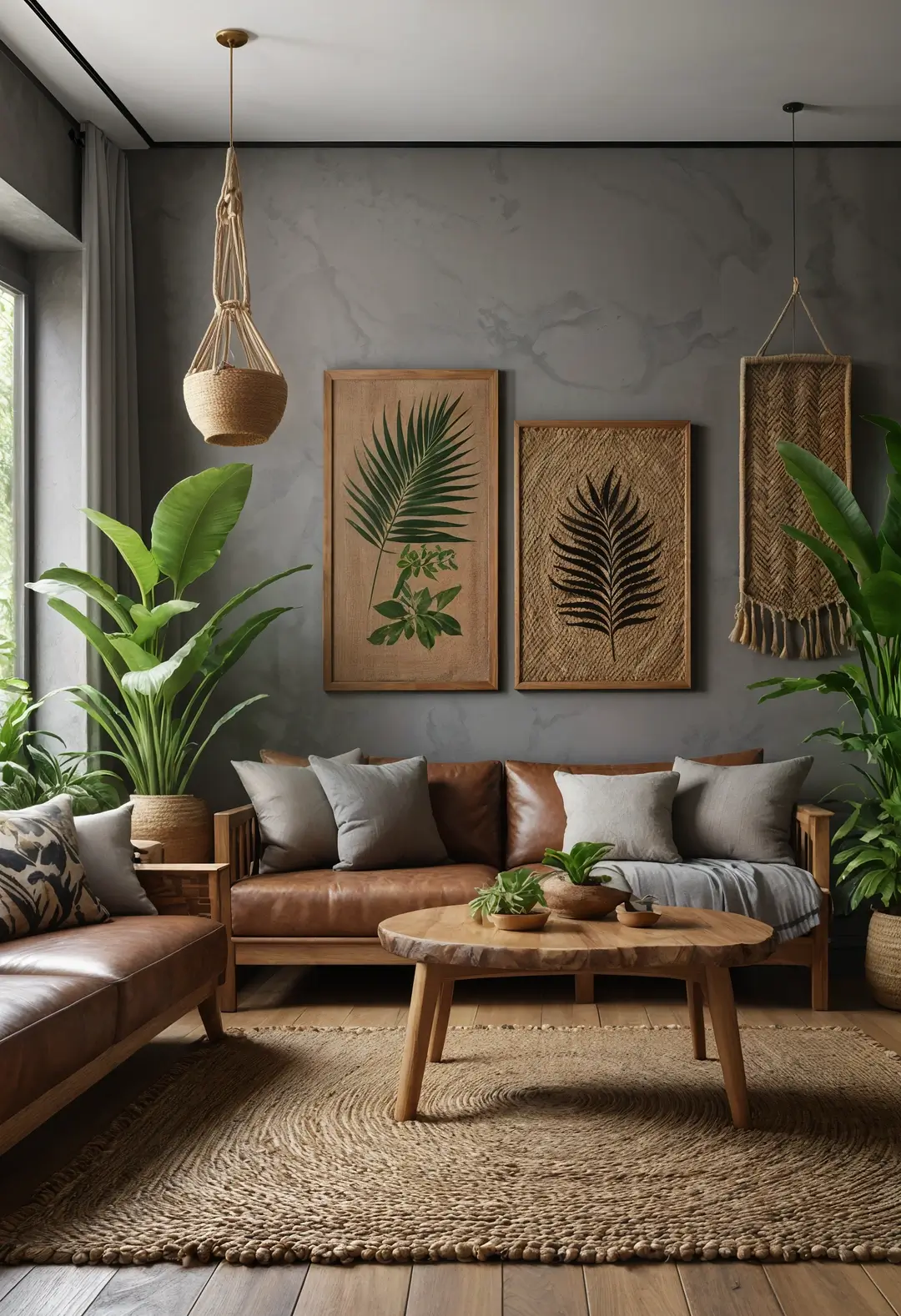
This organic approach often appeals to homeowners who want to connect their interior spaces with outdoor landscapes. Soft grey walls typically showcase brown wooden furniture while creating a natural flow.
Design philosophy: The most successful rooms often feel like natural extensions of their surrounding environment.
Essential addition: Natural fiber rugs often help ground the space both literally and visually.
24. Soft Sanctuary
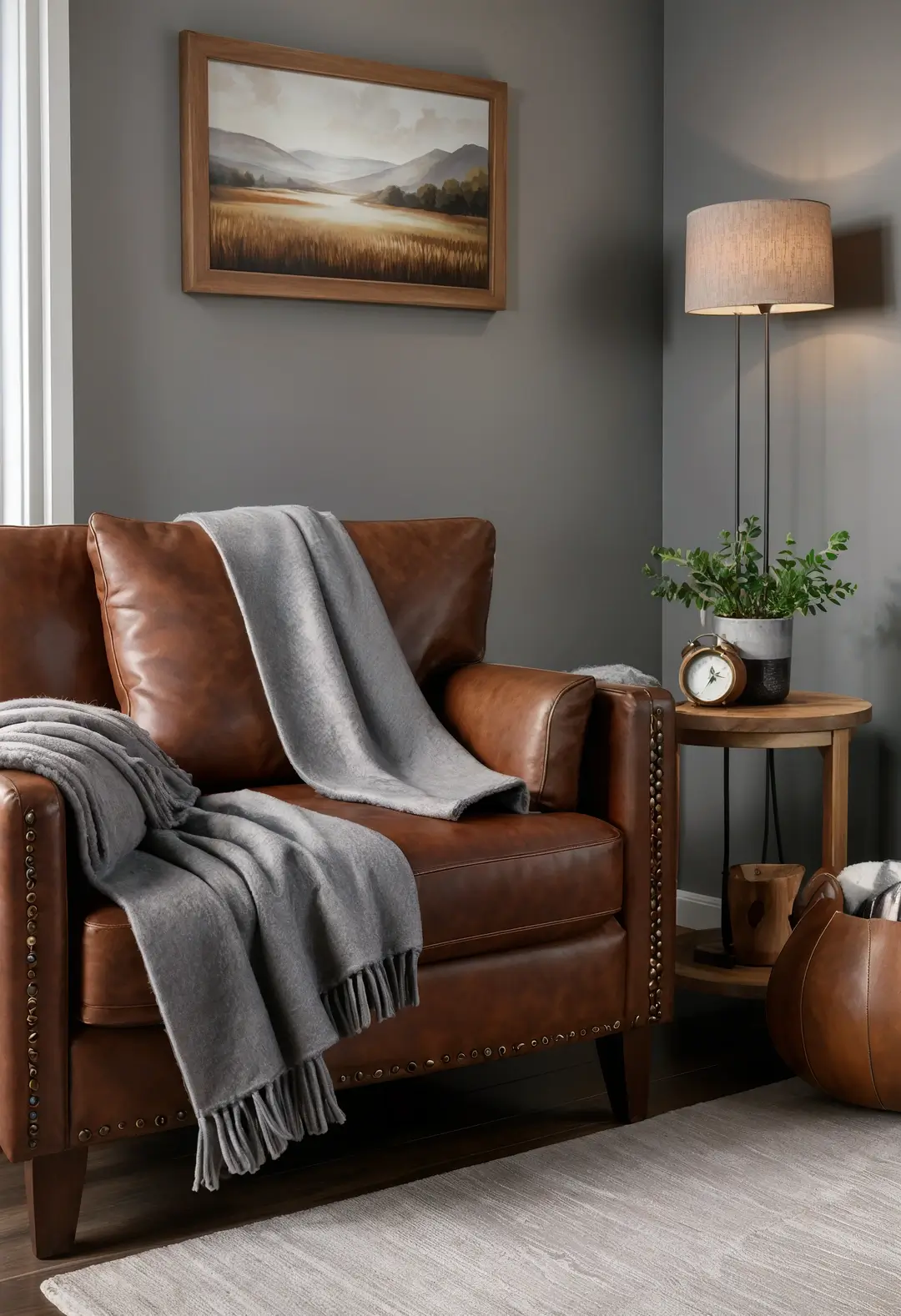
This gentle approach often works well for family rooms and frequently used spaces. Light grey walls with brown furniture typically create welcoming environments that handle daily wear gracefully.
Practical benefit: Neutral palettes often help camouflage common household challenges like pet hair and fingerprints.
Design wisdom: Both grey and brown tend to be forgiving colors for busy households with children or pets.
25. Glamorous Sophistication
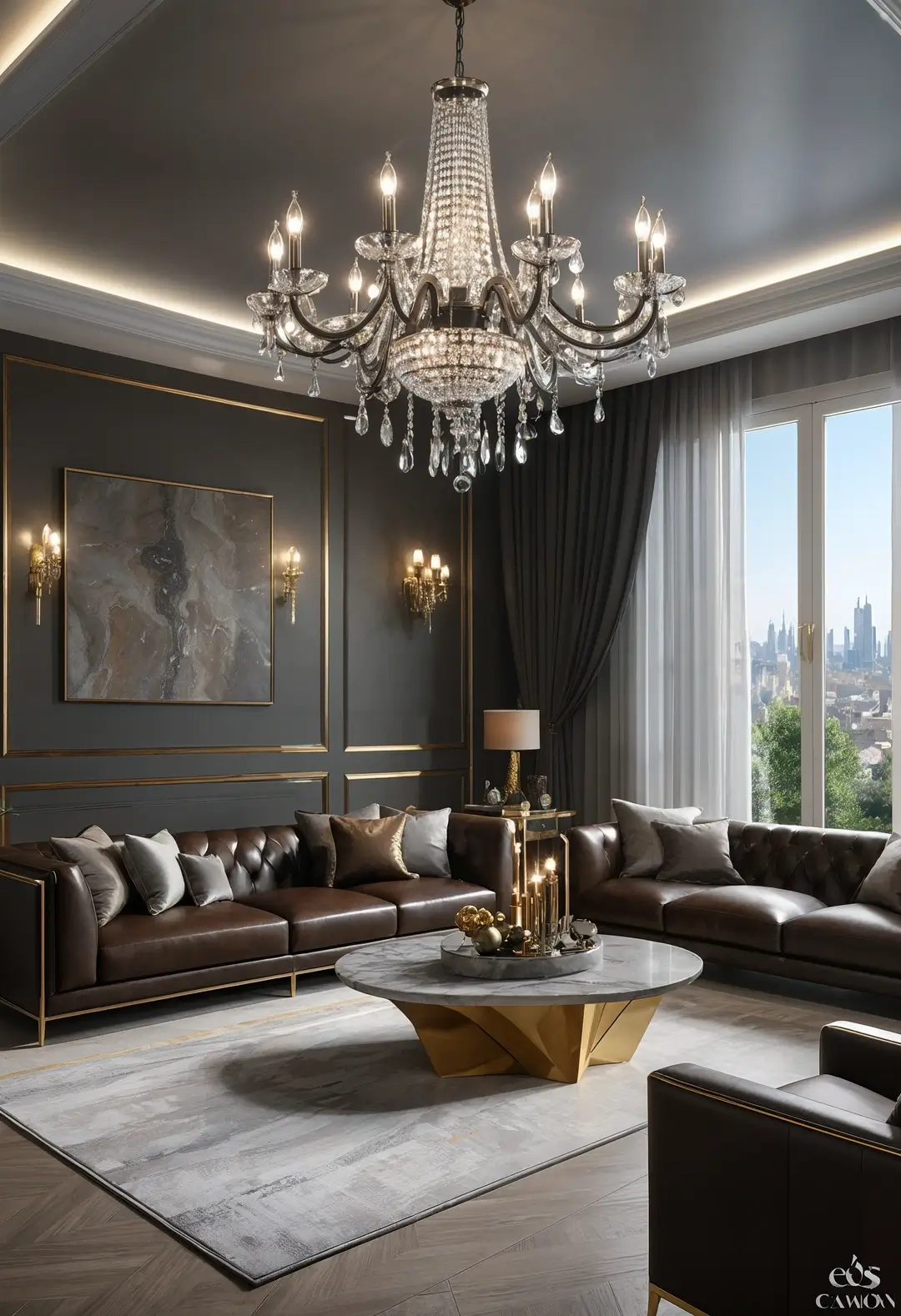
This approach often appeals to homeowners who enjoy elegant touches in their living spaces. Deep grey walls with dark brown leather furniture typically create an effective backdrop for metallic accents.
What enhances this style: Strategic metallic touches often prevent the room from feeling too serious or masculine.
Finishing consideration: Crystal chandeliers or brass sculptures may add the sparkle this style often benefits from.
Making It Work in Your Space
Through different installations, I’ve observed that the most successful grey and brown living rooms feel personal rather than overly designed. The key often lies in choosing elements that reflect how you actually live, not how you think you should live.
This color combination works well because it typically provides a practical foundation for daily life—sophisticated enough for entertaining, comfortable enough for regular use, and timeless enough to remain appealing over time. Whether you prefer minimalist simplicity or layered textures, grey and brown may support your vision while creating a living room that functions well for your lifestyle.
Remember: For any electrical work, structural changes, or built-in installations mentioned in these ideas, always consult with licensed professionals to ensure proper installation and code compliance.



